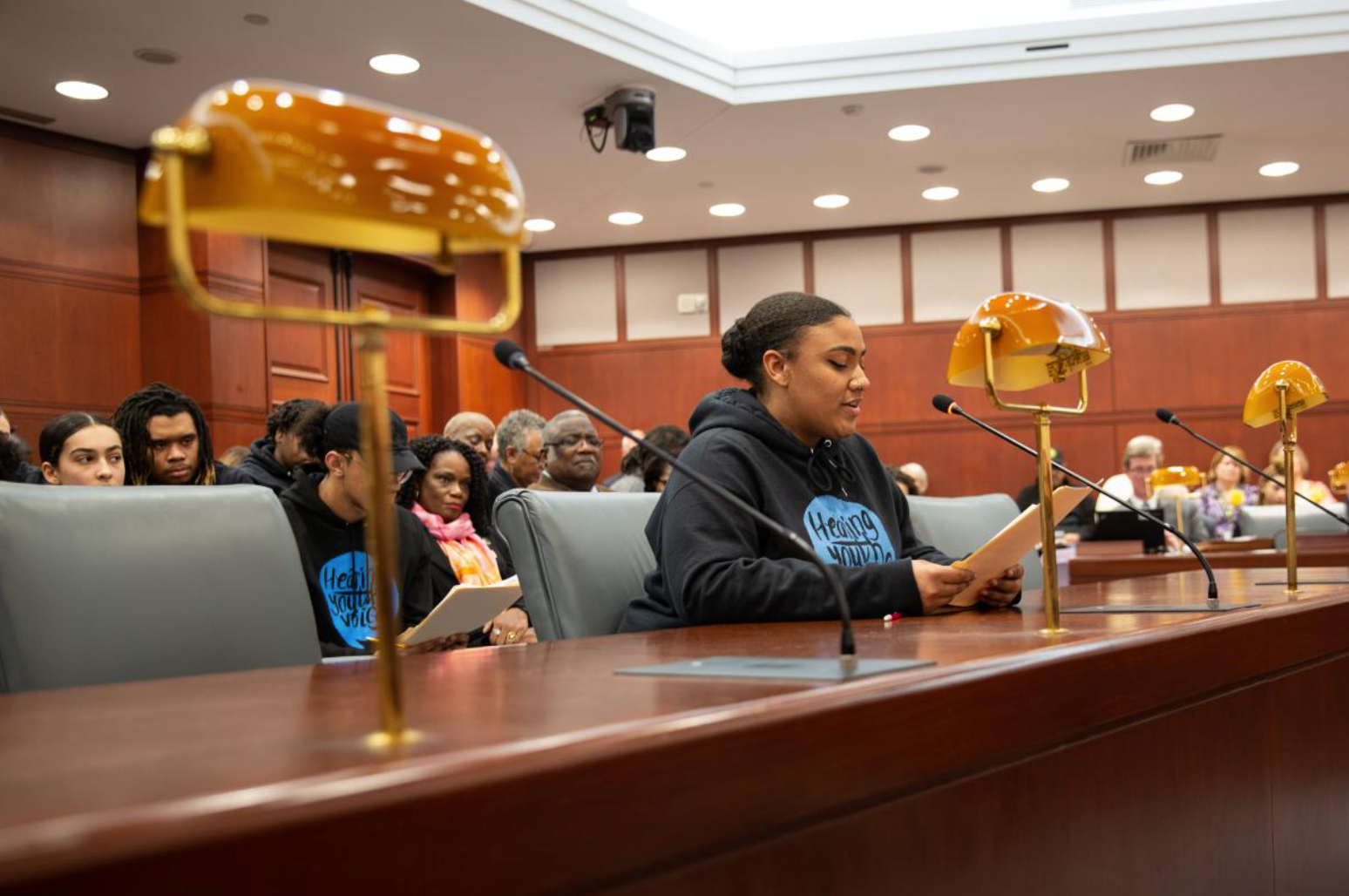Latinx History
March 2019— Taylin Santiago, New London High School student, testifies in support of HB 7082 and 7083. (Photo by Ryan Lindsay)
Curriculum unit. By Nataliya Braginsky.
This 22-page curriculum resource offers a critical introduction and comprehensive survey into teaching Latinx History. Authored by a New Haven high school teacher, this resource provides engaging content not only for students, but also essential context for teachers are learning to Latinx history as they prepare to teach it.
Includes five sub-units, each with its own classroom activities and guiding questions. This is a featured resource from the larger “Teaching Latinx Studies: Resource Guide”
5 Curricular Units:
What’s in a Name: Hispanic, Latina/o, Latinx
Indigenous Latin America, Spanish Colonization, and Latinx Resistance
Movements for Independence and Revolution throughout Latin America
Moving Borders / Moving Across Borders
20th Century Latinx Movements: Intersectionality and Cultures of Resistance
Curriculum Essential Questions:
Who and what are the diverse people, places, and time periods that Latinx history covers?
In what ways is Latinx history intertwined with indigenous and African American or Black histories?
What does Latinx history reveal about the United States, its foundation, and the ways it maintains power today?
How have Latinx people fought for freedom and justice throughout history and today, and in what ways have their struggles been in solidarity with various other groups?
What do the themes of borderlands and mestizaje, which are central to Latinx history, teach us about the country and the world?
What do Latinx people, history, and culture teach us about radically reimagining new possibilities and futures?
Teacher Introduction
In 2019 the activism of the youth of color across Connecticut came to fruition with the passing of statewide legislation requiring that all high schools in Connecticut offer an African American and Latinx History course as an elective option for students. On the one hand it is disappointing that in 2019 such legislation is necessary, that African American and Latinx history — not to mention Native American and Asian American history — is not already an integral component of U.S. history and high school curricula. On the other hand, given the reality of the situation, it is undeniable that this is a step in the right direction. Now that this legislation has passed, it is crucial that high-quality curricula is created by teachers, and that teachers across the state receive ongoing training in how to facilitate this curriculum.
The following curriculum will focus on one component of this new mandate, Latinx history. It is important to note that Latinx history is incredibly vast in terms of space, time, and peoples. To offer it as a half-year component of a course is already limiting this history. In the same vein, it is necessary to acknowledge that this curriculum will by no means be exhaustive. The hope is that teachers can take what is useful to them from this curriculum, as well as build upon it. Furthermore, although Latinx history is presented here in isolation, my intention is to integrate it with African American history, and I recommend other teachers do so as well. Teaching histories in isolation can purport the false notion that these different groups of people did not interact and that their histories do not overlap and intersect, when in fact they do.

